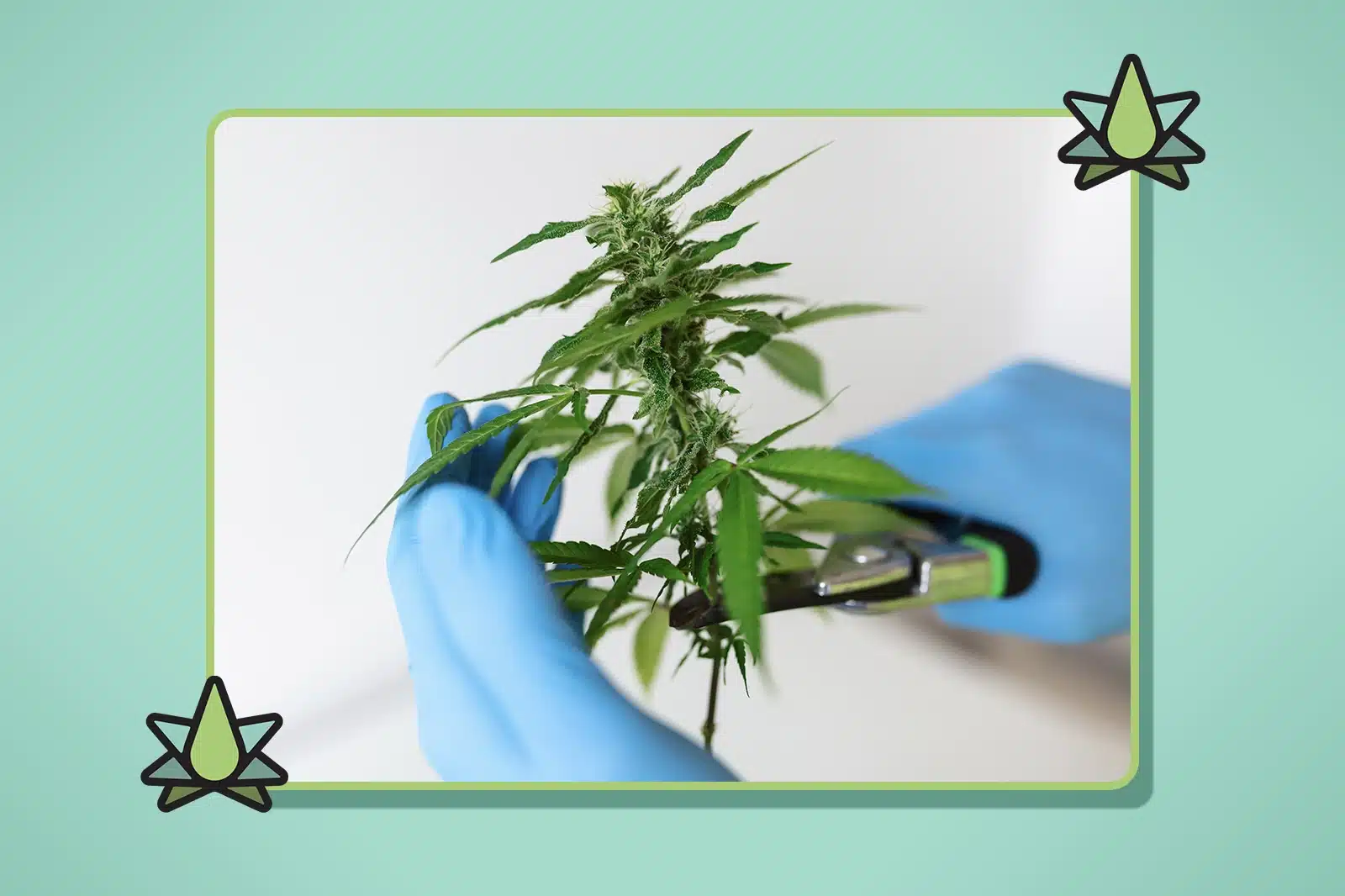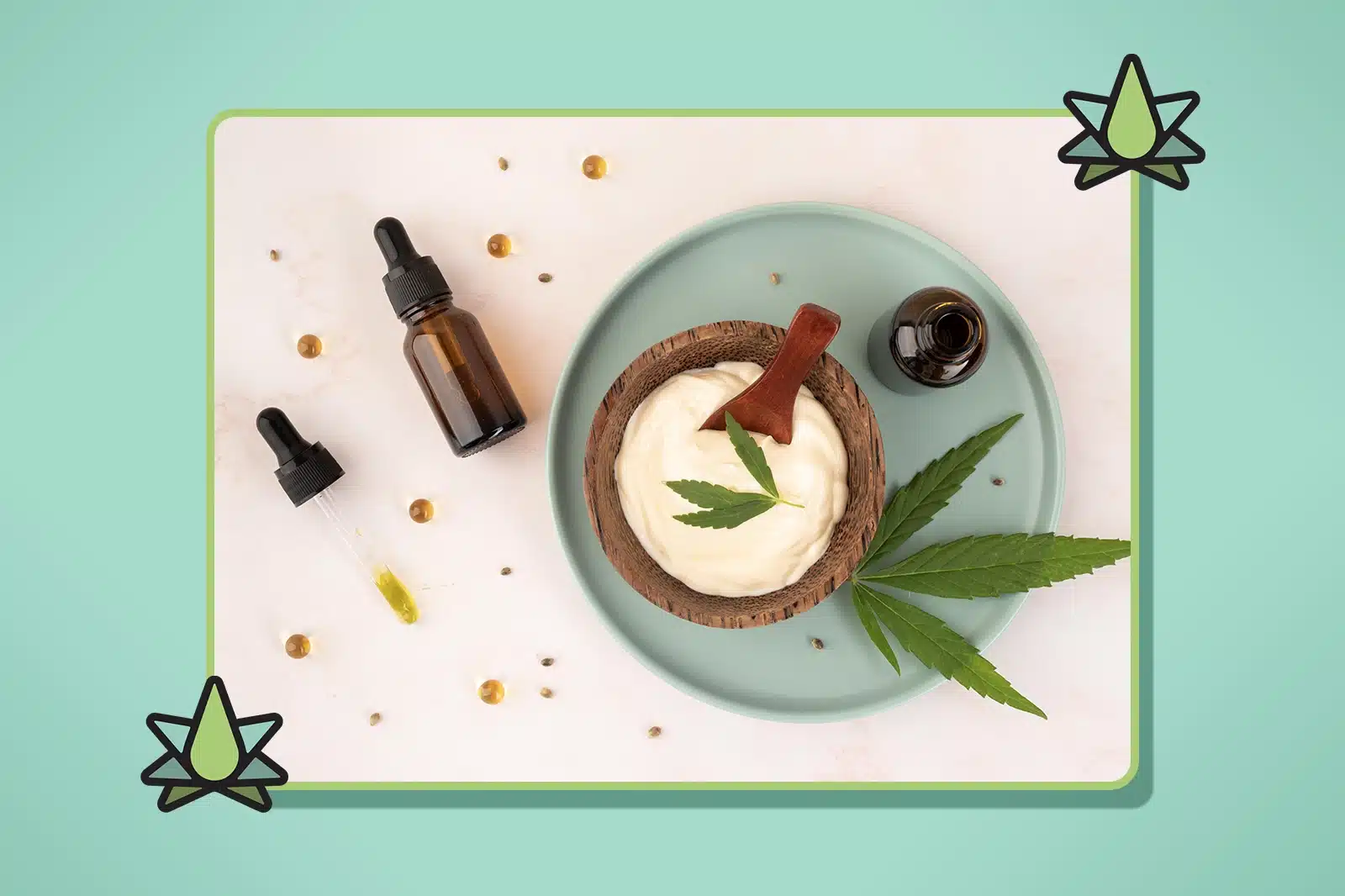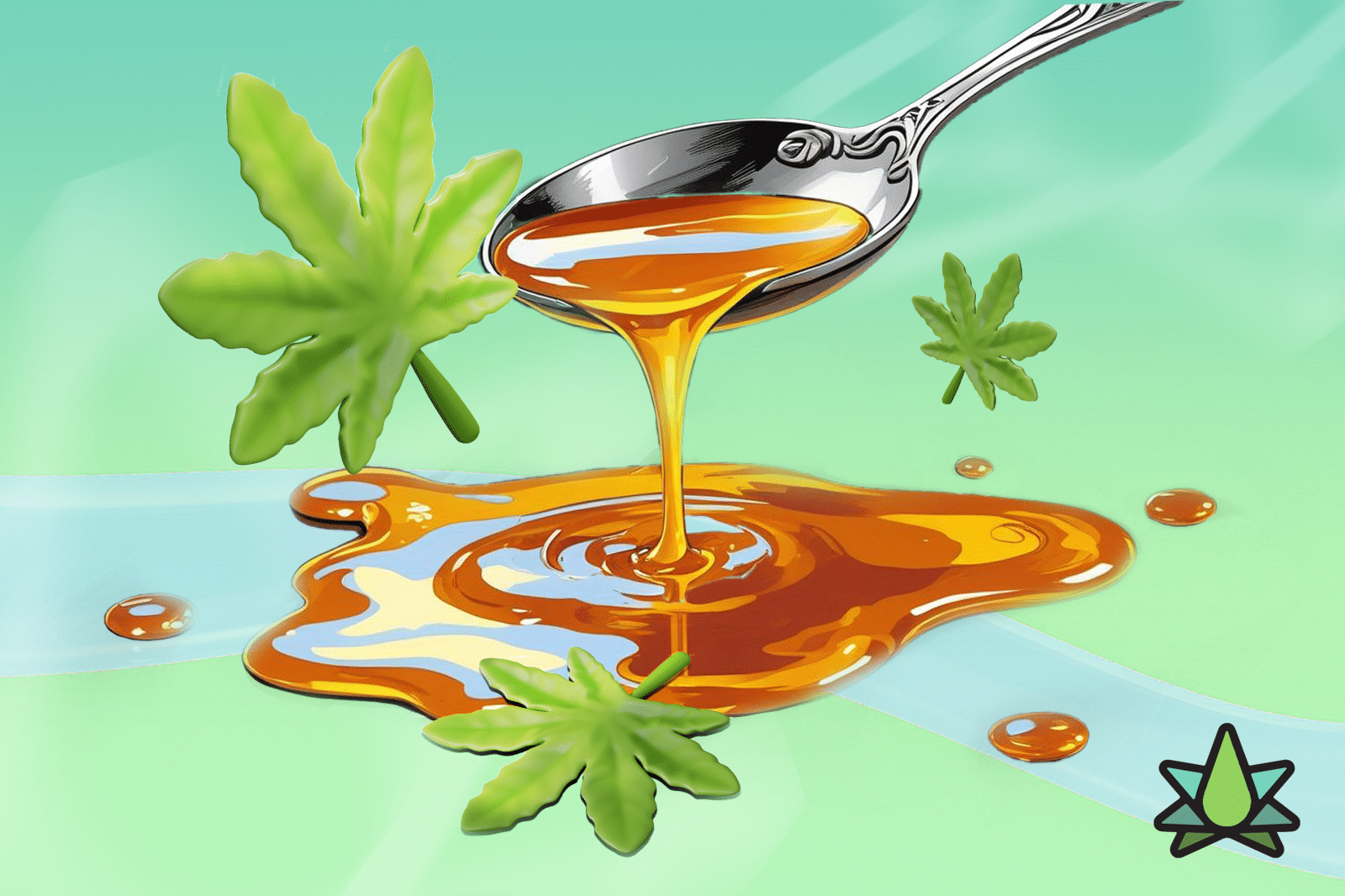The terms “cannabis terpenes” and “cannabis essential oil” are often used interchangeably. This unintentional mix-up can sometimes create costly business problems, including wrong sourcing decisions, formulation failures, missed opportunities for authentic product differentiation, and compliance issues when ingredients don’t match documentation.
So, what’s the difference between “cannabis terpenes” and “cannabis essential oil?”
For brands seeking to create a name in the authentic cannabis products category, this distinction affects everything from sensory characteristics and therapeutic potential to regulatory compliance and market positioning.
Choosing between isolated terpenes and complete essential oils determines product authenticity, consumer experience, and competitive advantage.
Key Takeaways
- Cannabis essential oil is the complete aromatic extract with 400+ compounds, including terpenes, aldehydes, ketones, and esters that create an authentic cannabis character.
- Terpenes comprise the largest fraction in cannabis essential oil, but represent only a part of the complete aromatic profile.
- Cannabis taste/flavor is a top purchase driver alongside THC content, with consumers demanding flower-like experiences in manufactured products.
- Hemp-derived essential oils are federally legal under the Farm Bill 2018.
Cannabis Essential Oil: The Complete Aromatic Matrix
Cannabis essential oil (EO) represents what extraction scientists call the “spirit” of the cannabis plant—the complete aromatic essence obtained through steam distillation of flowers, panicles, stems, and upper leaves of Cannabis sativa L.
Cannabis essential oil contains approximately 400 compounds, with terpenes forming the largest fraction but not the entirety of this complex matrix. The remaining compounds—aldehydes, ketones, esters, and other aromatic molecules—contribute to the overall cannabis experience consumers expect from premium products.
This oil has been used for centuries in aromatherapy and botanical medicine because it captures the full spectrum of volatile compounds responsible for cannabis’s distinctive sensory characteristics.

The complexity of cannabis essential oil is intriguing. Gas chromatography-mass spectrometry analyses show approximately 400 distinct compounds in cannabis EO, organized into two primary categories: the essential oil fraction and the cannabinoid fraction.
The former contains terpenes, aldehydes, ketones, esters, and other aromatic compounds, while the latter comprises cannabinoids like THC, CBD, CBN, and minor cannabinoids. This compositional diversity creates the unique aroma, taste, and effects that define cannabis cultivars.
For product developers, cannabis essential oil offers a complete sensory and therapeutic package. Unlike isolated compounds, the essential oil maintains the natural ratios and interactions between these components as they existed in the plant.
The preservation of this natural complexity translates to authentic consumer experiences and stronger market differentiation for brands using complete essential oil formulations.
Steam Distillation vs. Modern Extraction Methods
Traditional steam distillation, a classic method for obtaining cannabis essential oil, selectively captures volatile aromatic compounds while leaving behind cannabinoids and other non-volatile components.
This separation creates a concentrate of pure aromatic essence without psychoactive compounds, making it ideal for applications requiring cannabis character without THC concerns.
Modern extraction techniques have expanded beyond steam distillation to include CO2 extraction, hydrocarbon extraction, and solventless methods. Each approach captures different compound profiles, with some preserving more compounds than others.
Our Fresh Never Frozen® extraction method is an advanced approach that maintains the delicate volatile compounds often lost in traditional processing.
The Sensory Science Behind Cannabis Essential Oil
The unique aroma and flavor characteristics of cannabis essential oil result from complex interactions between multiple compound classes. While terpenes provide the primary aromatic foundation, aldehydes contribute fresh, green notes, ketones add complexity and depth, and esters provide sweet, fruity characteristics. Terpenes alone cannot replicate this multidimensional aromatic profile.
Consumer research suggests that sensory authenticity drives purchase decisions. A BDSA’s 2024 Consumer Insights document shows that taste/flavor is a top purchase driver alongside high THC content.
Products formulated with complete cannabis essential oil consistently deliver more authentic sensory experiences compared to those using isolated terpenes, translating to increased consumer satisfaction and brand loyalty.
Cannabis Terpenes: The Primary but Incomplete Component
Terpenes are the largest and most studied component of cannabis essential oil. They are organic compounds made entirely of hydrogen and carbon atoms. These volatile aromatic metabolites serve multiple functions in nature: they facilitate chemical communication between organisms, attract beneficial pollinators, and deter harmful predators.
In cannabis, terpenes provide the primary aromatic characteristics that consumers use to identify and select preferred varieties.

The cannabis plant produces over 200 terpenes, though 8-15 major terpenes typically dominate any variety’s profile. These include monoterpenes like myrcene, limonene, pinene, and sesquiterpenes like beta-caryophyllene and humulene.
Each terpene contributes distinct aromatic characteristics and therapeutic effects, but their interaction as a complete profile creates the overall cannabis experience.
Understanding terpene categories helps product formulators optimize extraction and formulation processes. Monoterpenes are highly volatile and easily lost during processing, while sesquiterpenes are more stable. This stability difference affects everything from storage requirements to final product shelf life.
Beyond Cannabis: Terpenes in Nature’s Aromatic Kingdom
Terpenes are not unique to cannabis alone. They appear in countless other plants and define their distinctive scents. For example, the refreshing scent of pine forests comes from pinene, the energizing aroma of citrus fruits is due to limonene, and the calming fragrance of lavender results from linalool. These same terpenes appear in cannabis, too, creating familiar aromatic connections that influence consumer preferences and product selection.
This natural distribution explains why some cannabis varieties smell like fruits, spices, or other botanicals. However, the combinations and ratios in cannabis create unique aromatic profiles that cannot be perfectly replicated using terpenes isolated from other plants.
The surrounding matrix of cannabis-specific compounds provides context that affects how individual terpenes are perceived and experienced.
Terpene Biosynthesis and Strain Variation
Terpenes in cannabis are produced primarily in glandular trichomes, the same structures that produce cannabinoids. The shared biosynthetic pathway creates a natural correlation between cannabinoid and terpene profiles, contributing to the entourage effect that differentiates strain experiences.
Environmental factors, like temperature, humidity, light intensity, and nutrient availability, significantly influence terpene expression. High-quality terpene oils result from optimized growing conditions that maximize terpene quantity and quality, creating more consistent products for manufacturers.
The Critical Distinction: Complete vs. Isolated Compounds
The fundamental difference between cannabis essential oil and isolated terpenes lies in compositional completeness and performance characteristics. Cannabis essential oil provides the full aromatic matrix as it exists in the plant, while isolated terpenes offer selected components extracted from this complex mixture or sourced from other botanical sources.
This distinction creates differences in product performance. Essential oil formulations deliver more authentic sensory experiences, better consumer recognition of strain characteristics, and more robust effects than isolated terpene products. This difference is a key competitive advantage for brands targeting premium positions based on authenticity claims.
Analytical Evidence: Chromatographic Complexity Comparison
Gas chromatography analyses show the stark complexity differences between complete essential oil and isolated terpene formulations.
Cannabis essential oil chromatograms display 150+ distinct peaks representing individual compounds, while typical terpene isolate formulations show 8-15 major peaks. This correlates directly with consumer sensory experiences and product differentiation potential.

The minor compounds visible as small peaks in complete essential oil analyses contribute disproportionately to overall aroma and effect characteristics. These trace components (aldehydes, ketones, and esters) create the subtle complexity that distinguishes authentic cannabis products from simplified recreations using isolated terpenes.
Manufacturing Considerations: Stability and Processing
Complete cannabis essential oil and isolated terpenes behave differently during manufacturing processes, affecting formulation decisions and processing parameters. Essential oils typically require gentler handling due to the presence of delicate minor compounds, while isolated terpenes often show greater stability but less complexity in final products.
With cannabis essential oil, products maintain better sensory authenticity throughout their shelf life compared to those using isolated terpenes. This stability results from the natural protective effects of complete compound matrices, where various components help preserve each other through their antioxidant and synergistic properties.
Market Evolution: Consumer Demand for Complete Cannabis Experiences
Consumer sophistication in cannabis markets continues advancing, driving demand for products that deliver flower-like experiences. This trend reflects broader consumer movements toward ingredient transparency, authentic sourcing, and premium quality across food, beverage, and wellness categories.
Consumers increasingly demand products containing the full spectrum of natural compounds found in cannabis flower, without non-cannabis ingredients that compromise authenticity. This shift creates opportunities for brands using complete essential oil formulations to capture premium market positions.
Classification Beyond Indica and Sativa
Traditional indica and sativa classifications, based on plant morphology rather than chemical composition, provide limited guidance for product development and consumer experience prediction. Modern cannabis classification relies on their aromatic profiles, including the major and minor compounds in essential oils.
This shift toward chemistry-based classification benefits products formulated with complete cannabis essential oil. These products maintain the full aromatic fingerprint necessary for accurate strain representation.
Industry Infrastructure Development
The cannabis industry’s infrastructure development supports complete cannabis product manufacturing. Extraction facilities, testing laboratories, and distribution networks have advanced to handle the complexities of essential oil preservation and analysis, making authentic formulations more accessible to product developers.
Companies like Terpene Belt Farms have developed supply chain capabilities to support brands seeking complete cannabis experiences. This infrastructure development removes many historical barriers to using authentic essential oil formulations, making them viable alternatives to simplified terpene-only approaches.
Technical Applications: Formulation Strategies for Different Product Categories
Different product categories benefit from distinct approaches to incorporating cannabis essential oil versus isolated terpenes, depending on manufacturing requirements, stability needs, and desired consumer experiences. Understanding these application-specific considerations helps formulators make optimal sourcing decisions for their specific product goals.
Vaporizer Formulations
Vaporizer products benefit from complete essential oil formulations due to the direct sensory delivery method. When consumers vaporize products, they experience the full aromatic profile without interference from other flavoring agents or processing artifacts.
Cannabis essential oil provides the original strain recognition that experienced cannabis users expect from premium vaporizer products.
The temperature stability of complete essential oils also offers advantages in vaporizer applications. While isolated terpenes may break down differently under heat, the complete compound matrix in EOs provides natural protection and more consistent performance across various temperatures, translating to consistent consumer experiences.
Edible and Beverage Applications
Edible and beverage formulations present different challenges for cannabis essential oil integration, primarily related to flavor balance and stability in complex food matrices.
Cannabis essential oils often require careful formulation to prevent overwhelming other flavors, while isolated terpenes offer more precise control over specific aromatic contributions.
However, formulations using essential oils in edibles appeal to consumers seeking plant-like experiences. Brands using cannabis essential oils report stronger consumer appreciation of strain characteristics and more differentiated products than competitors using isolated terpenes or artificial flavoring.
Topical and Cosmetic Products
Topical applications benefit from cannabis essential oil’s complete therapeutic profile, which includes not only terpenes but also other aromatic compounds with potential skin benefits. A complete profile may enhance aromatherapy effects and better consumer acceptance than simplified terpene formulations.
Stability considerations are critical in topical formulations, where products may have extended shelf lives and be exposed to various environmental conditions. Essential oil formulations require careful preservation strategies and packaging solutions to maintain integrity throughout their life cycles.
Regulatory Considerations: Compliance Through Hemp-Derived Sources
Hemp-derived cannabis essential oil offers tangible regulatory advantages for product developers seeking cannabis characteristics while remaining compliant with federal regulations. Hemp cultivation under the 2018 Farm Bill provides a legal framework for producing cannabis essential oils without THC concerns.
This enables brands to make hemp-derived essential oil with the complete aromatic profile necessary for strain-specific products without the regulatory complications associated with high-THC cannabis sources.
Quality Standards and Testing Requirements
Due to its compositional complexity, cannabis essential oil requires more sophisticated analytical tests than isolated terpenes. Testing protocols must identify and quantify major terpenes and minor compounds, contaminants, and stability indicators. This ensures consistent quality and supports authenticity claims.
Reliable suppliers provide detailed Certificates of Analysis documenting essential oil composition, including trace compounds rarely found in isolated terpene products. This analytical transparency is vital as brands make authenticity claims requiring scientific substantiation and regulatory compliance.
International Market Considerations
Global markets present varying regulatory environments for cannabis-derived ingredients, making hemp-derived essential oil more practical for international expansion. Products formulated with compliant hemp essential oil can often enter markets where traditional cannabis ingredients face restrictions.
The acceptance of hemp-derived ingredients continues to improve as regulatory frameworks mature. Brands building global strategies can benefit from formulating with hemp essential oil early, establishing authentic product identities that can expand internationally as regulations allow.
Strategic Sourcing Decisions: Building Authentic Brand Positioning
Choosing between cannabis essential oil and isolated terpenes should align with overall brand strategy, target consumer demographics, and market positioning goals. Brands focused on premium positioning, authenticity, and sophisticated consumer experiences typically benefit from essential oil formulations despite higher input costs.
Supplier Evaluation Criteria
Selecting cannabis essential oil suppliers requires evaluating their capabilities. Key considerations include extraction methodology, source material quality, analytical testing depth, supply chain consistency, and technical support capabilities.
Wholesale suppliers offering cannabis essential oil solutions should demonstrate expertise across the entire production chain from cultivation to final formulation.
Maintaining a good supplier relationship is vital for essential oil formulations due to the complexity of maintaining quality and consistency. Unlike isolated terpenes, where specifications are relatively straightforward, essential oils require ongoing collaboration to optimize formulations for specific applications and market requirements.
Cost-Benefit Analysis Framework
While cannabis essential oils may carry higher unit costs than isolated terpenes, the total value proposition often favors premium brands. Factors to consider include enhanced consumer experience, stronger brand differentiation, reduced need for additional flavoring, and the potential for premium pricing.
The market premium for authentic cannabis products continues to expand as consumer sophistication increases. Brands investing in cannabis essential oil formulations position themselves to capture this growing market segment while building long-term competitive advantages based on product experiences.
Future Outlook: Moving Toward Complete Cannabis Products
Industry trends indicate a shift toward cannabis products that exhibit the full complexity of the plant. This evolution mirrors developments in other natural product industries where consumers increasingly value authenticity, transparency, and complete ingredient profiles over synthetic alternatives.
Technology Advancement Impact
Extraction and analytical technologies continue advancing, making the production of cannabis essential oil more efficient and accessible. New methods for preserving the delicate aromatic compounds, improving extraction yields, and maintaining consistency create opportunities for broader adoption of EO formulations across product categories.
These technological improvements reduce the cost barriers that historically favored isolated terpenes. As production scales increase and extraction efficiency improves, the economic advantages of EO formulations will become more compelling for a wider range of product applications.
Consumer Education and Market Development
Consumer education continues to drive demand for more authentic products. As consumers learn to distinguish between complete cannabis experiences and simplified recreations, market pressure increases for brands to adopt more authentic formulation approaches.
This trend benefits brands already using cannabis essential oil formulations, as they can leverage their authentic positioning to capture increasingly sophisticated consumer segments. Early adoption of EO formulations provides competitive advantages that become more valuable as market education progresses.
Start formulating with authentic cannabis essential oil, available in Exclusive, Premium, and Standard tiers.
Standard tier profiles deliver core Fresh Never Frozen® authenticity for most commercial applications, while Premium tier selections provide specialized cultivar expressions with enhanced terpene diversity. Exclusive tier offerings feature limited harvest profiles from proprietary genetics unavailable elsewhere.
Request terpene samples to experience the complexity and authenticity advantages of our terpene oils. Our technical team provides comprehensive support for integrating terpenes into your applications and manufacturing processes.
Frequently Asked Questions
What’s the Key Difference Between Cannabis Essential Oil and Cannabis Terpenes?
Cannabis essential oil is a full-spectrum aromatic extract with over 400 compounds, including terpenes, aldehydes, ketones, and esters. It captures the complete scent and flavor of the cannabis plant. In contrast, cannabis terpenes refer only to a subset of these compounds, often isolated or botanically sourced.
Why Does This Distinction Matter for Product Formulation?
Using complete cannabis essential oil creates more authentic, flower-like experiences and strain recognition due to its compositional complexity. Isolated terpenes, while more stable and easier to handle, often lack the depth, nuance, and synergy needed for premium product performance.
Are Cannabis Essential Oils Compliant with Federal Regulations?
Yes—when derived from legally grown hemp under the 2018 Farm Bill, cannabis essential oils are federally compliant. They contain no THC and are suitable for a wide range of products, including edibles, topicals, and vaporizers.
How Do Essential Oils Impact Consumer Satisfaction Compared to Terpene Isolates?
Products formulated with cannabis essential oil tend to deliver a richer, more authentic sensory experience. Research shows consumers prioritize taste and flavor, making essential oil formulations more likely to drive satisfaction, loyalty, and perceived product quality.
Sources Cited
- Essential Cannabis Insights. (2022). In BDSA.
- Toffolatti, S. L., Maddalena, G., Passera, A., Casati, P., Bianco, P. A., & Quaglino, F. (2021). Role of terpenes in plant defense to biotic stress. In S. Jogaiah (Ed.), Biocontrol Agents and Secondary Metabolites (pp. 401–417). Woodhead Publishing.
- Farm Bill | U.S. Department of Agriculture.
- Zandkarimi, F., Decatur, J., Casali, J., Gordon, T., Skibola, C., & Nuckolls, C. (2023). Comparison of the Cannabinoid and Terpene Profiles in Commercial Cannabis from Natural and Artificial Cultivation. Molecules (Basel, Switzerland), 28(2), 833.


